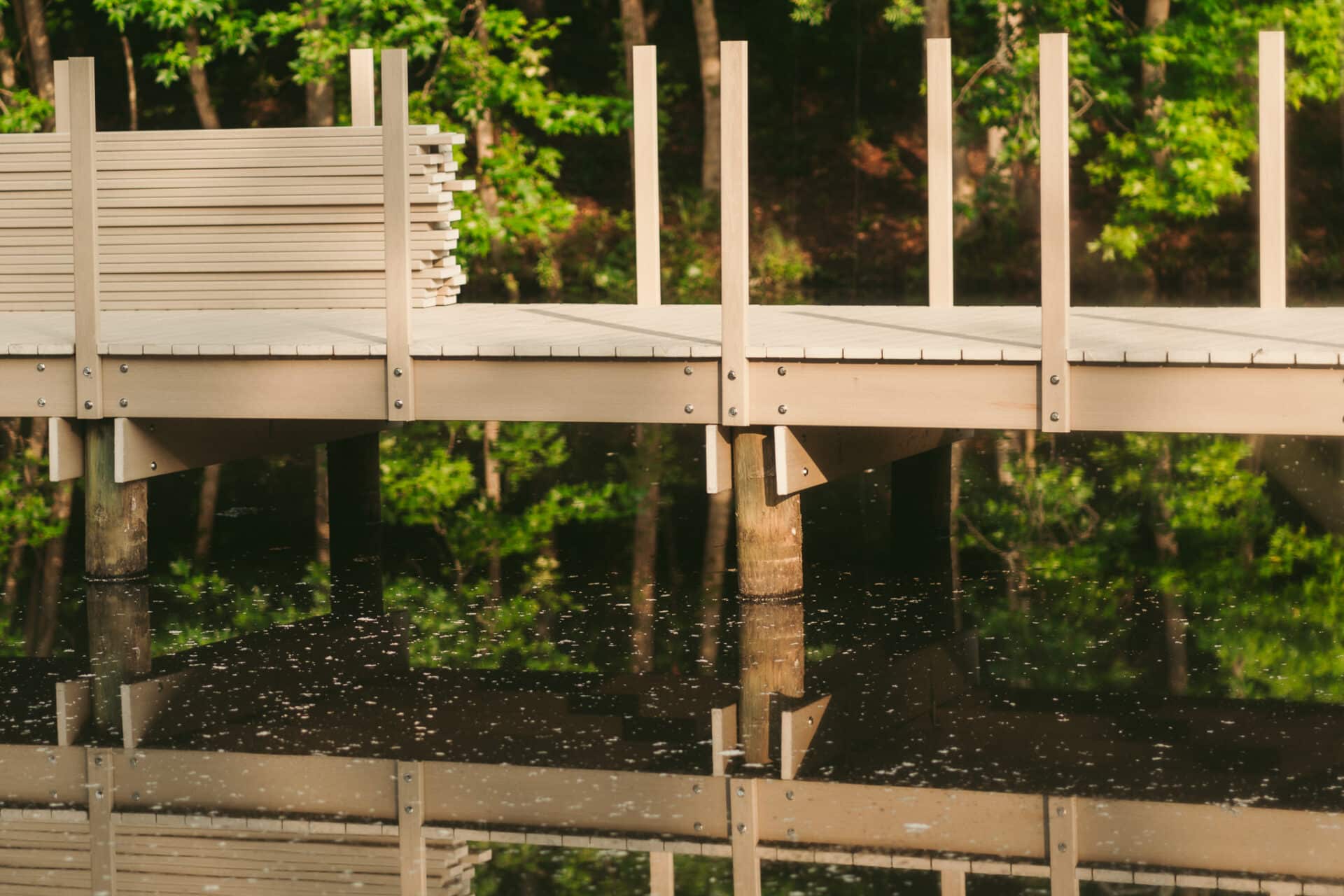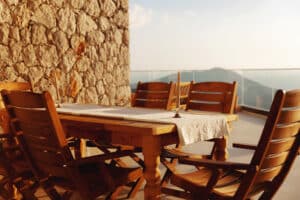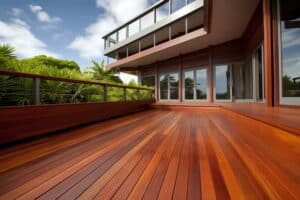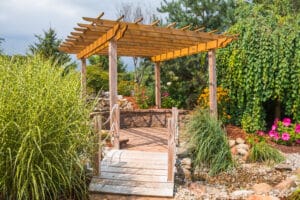Engineered wood products are transforming conventional construction. Today, building structures demand more than what wooden decks and structures provide, requiring greater resilience against wear and tear, high load-bearing capacity, and resistance to the elements. Plus, elegance in design is top of mind.
Modern engineers have created structural composite lumber (SCL), which challenges traditional wood decking and offers impressive durability and sustainability.
So, what is SCL, exactly? How is it best used? And what are its advantages? SCL is a fantastic material for composite decking and outdoor living spaces—read on to learn how it can help you with your next build!
Defining Structural Composite Lumber
Structural composite lumber is made by layering dried and graded wood veneers or strands with an adhesive.
The manufacturing process starts with something surprisingly simple: wood veneers, strands, or flakes layered with moisture-resistant adhesive to form a billet. This billet then goes into a heated press before being cut into sizes. This heavy timber ranges from 2 inches thick to 4 inches wide, with moisture content around 20% or less.
Structural manufacturers typically use softwoods to engineer this product. Common examples of tree species they use include:
- Southern Yellow Pine
- Douglas Fir
- Ponderosa Pine
- Western Red Cedar
- White Fir
It has incredible strength, dimensional stability, long-term reliability, and eco-friendly sustainability. Its low moisture content makes it resistant to warping, making it perfect for structural components in construction.
Types of Structural Composite Lumber
SCL includes several types of wood in its family of engineered wood products.
Laminated Veneer Lumber (LVL)
Often used for headers and beams, hip and valley rafters, scaffold planking, and prefabricated wood I-joists, it layers wood veneers together and resists warping.
Parallel Strand Lumber (PSL)
PSL bonds long, parallel strands together for solid durability and is typically used for beams and columns because of its exceptional load-carrying capacity.
Laminated Strand Lumber (LSL)
Made from flaked wood mixed with adhesive and pressed into shape, LSL is used for studs to millwork components.
Oriented Strand Lumber (OSL)
Also made from flaked wood, OSL is a material with consistent strength in multiple directions, offering remarkable load-bearing capacity and versatility. It’s a preferred option for building I-joists, billets, and trusses.
Benefits of Using Structural Composite Lumber
The manufacturing process makes SCL stronger and more consistent in quality than conventional wood, with less waste and more longevity.
Increased Strength and Potential Lifespan
SCL is built to last. Its material is strong and beautifully withstands extreme weather and all four seasons. This leads to strong composite decking and a structural lifespan with decades of reliability despite harsh weather or heavy loads.
It’s less likely to warp, split, or shrink than natural wood, giving you optimal integrity and stability.
Positive Environmental Impact and Sustainability
SCL uses smaller and fast-growing trees, underutilized species, and a higher percentage of wood scraps to maximize forest reserves without waste, reducing the need for wood and deforestation. This is a big step toward greener construction practices.
Composite decking is manufactured through an environmentally friendly process called a “co-extrusion,” which doesn’t use toxic chemicals and only uses moderate energy. It holds significant amounts of carbon, which increases the energy efficiency of your building.
Additionally, composite decking materials are typically recyclable, reducing waste.
Commercially Available in the US
SCL is readily available in US wood distribution systems, so you have what you need when you need it.
Owens Corning WearDeck™: The Preferred Choice for Composite Deck Boards and Marine Construction
Harbor Exports proudly supplies Owens Corning WearDeck™, North America’s premier composite decking producer for commercial and residential uses. It’s a standout when it comes to wear and tear from the elements compared to wood deck boards.
Owens Corning engineers and develops composite materials that are light, strong, and versatile, suitable for many structural residential and commercial applications.
WearDeck™ composite decking is the perfect match for projects utilizing structural framing. Both materials are engineered to withstand the elements and require minimal upkeep, making them ideal for building beautiful, long-lasting outdoor living areas.
The company aims to build a sustainable future through material innovation, producing some of the most sustainable and durable wood products for composite decks on the market today.
Waterproof For Strong Marine Performance
Owens Corning WearDeck™ manufactures its products from high-density polyethylene (HDPE) to be weather-resistant, long-lasting, durable, and strong. Its moisture-resistant adhesive repels mold, mildew, pests, stains, and fading, giving you integrity even in incredibly harsh conditions.
In addition, it offers enhanced mechanical performance and lower upkeep costs than traditional wood fibers and decking material.
It also has a high rating for underwater installation and can be completely immersed in either fresh or saltwater. This makes it a fabulous choice for coastal areas and marine construction projects that warrant an outdoor deck.
Heat-Reflective Surfaces for Maximum Comfort
Owens Corning WearDeck™ is engineered to be cool composite decking. It’s intentionally designed to stay cool even in direct sunlight, making it ideal for outdoor areas exposed to head-on sun rays.
Efficient Installation Process and Low Maintenance Schedule
Owens Corning WearDeck™ requires minimal care as well as has flexibility to tailor it to various specifications so that you can enjoy your composite decking more due to less upkeep with proper maintenance.
It typically takes less labor to install a composite deck compared to traditional wooden decking, reducing costs. You can even get SCL with low-density products yet maximum strength, which can lower your costs with foundation work.
Flexibility on Aesthetics
Owens Corning WearDeck™ has nine colors to choose from, from standard black, gray, sand, and white to variations on natural wood like barefoot sand and saddle.
There is also much more diversity in sizing and dimensions, so you have great flexibility in your construction and composite decking projects.
Call Harbor Exports For Your Next New Deck
When you’re ready to begin your construction project, purchase structural composite decking and all other lumber products you need from Harbor Exports.
Call us today with your specifications. Our team of experts can guide you on product selection from the finest manufacturers, maintenance schedules, and any aspect of your project.



